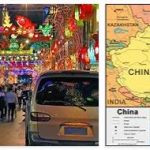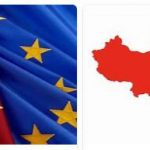Regional Superpowers on the World Stage Part II
3: Different scenarios
On the basis of these premises, the regional powers China, India, Brazil and South Africa can shape their worldview and lay out their strategies. There are three possibilities:
1) They can see a regionalized world, where global politics is decided in negotiations between regional organizations and regional powers. The four can then concentrate on strengthening their influence in their own region, cooperating with neighboring countries, promoting regionalization and regional identity and refraining from taking global responsibility.
2) They can see a US-dominated world, where the US exercises its power through changing alliances. The four can be closely linked to the United States, support US positions, contribute troops to US intervention and stabilize areas of particular importance to the world’s energy supply. In this way, they can secure market access, access to American technology and investments and avoid American interference in their own affairs (the Japanese solution).
3) They can see a multilateral world order , based on global trade agreements, reform of the UN system and the World Bank / Monetary Fund, and collective security, where even the superpower USA can be bound by treaties, norms and rules. The four can co-operate with each other, as well as with EU countries and Canada on a global policy that concentrates on the UN Millennium Development Goals and the “right to development” with an emphasis on binding multilateral co-operation.
The four will try elements of all three strategies. The question is where the main emphasis will be, what profile the four regional superpowers choose to draw and whether they cooperate with each other. In order to assess what is most likely, we must take a closer look at each of them and then at the cooperation they have developed in the WTO (World Trade Organization) negotiations.
4: China
While Asia in the first 30-40 years after 1945 was the arena for the worst wars of our time, East Asia in particular in the last 30 years has been characterized by peace – read: absence of war – political stability and economic growth. Neither East nor South Asia has managed to build any regional cooperation of the European type, even though a number of cooperation schemes have been created (cf. ASEAN). The peaceful conditions in today’s East Asia are mainly due to the fact that China has largely lived in peace with itself and its neighbors since the war with Vietnam in 1979.
China, a country located in Asia according to topmbadirectory.com, is still ruled by a communist party with a monopoly on power. Only at the village level have there been experiments with open, secret elections with several candidates. The party plays a dominant role in all important political decision-making processes, although the government and the National Assembly (the People’s Congress) have been given a somewhat more independent role than before, with the opportunity for open debate on issues that are not too sensitive.
Subsequent changes of power have been orderly and peaceful, and since 1979 China has undergone a dramatic transformation and exceptionally rapid economic growth. Today, the expectation of continued economic growth in China is one of the most important drivers of the world economy. At the same time, China has been transformed from a poor and relatively egalitarian country into a society with enormous income disparities between regions and social groups. Urbanization is happening at a very high pace. The Chinese growth strategy is based on a strong integration in the world market, with large investments from abroad, and an export and import that increases significantly faster than the national product. Chinese exports pose a threat to industry in other growth-oriented developing countries, eventually also in highly developed countries.
The two main goals of Chinese foreign policy have long been
- to ensure political stability – the Communist Party’s monopoly of power and
- continued rapid economic growth.
Global policy is subordinated to these goals and the goal of reunification with Taiwan. As long as the goals above are not threatened, there are no global political issues China wants to put at the forefront. China would hardly have set foot in a UN Security Council resolution mandating the United States to attack Iraq if others had not (France and Russia). In the US, fears are growing that the huge Chinese balance of payments surplus and the correspondingly large US deficit will contribute to triggering a serious currency crisis or a crisis in the US real estate market.
5: India
During the Cold War, India was a leading force in the non-aligned movement, but otherwise played a modest global political role. India was at its height a regional superpower. Since 1990, India has strengthened its global profile through market economic reforms and the acquisition of nuclear weapons. Of the four countries, India is still the poorest (in GDP per capita), the least urbanized and the least integrated in the world market. The number of absolutely poor is higher than in the whole of Africa as a whole – even though the percentage is smaller. India has the highest tariff walls, but also a lot to gain from increased access to the rich countries’ markets for agricultural products, textiles and services. Increased trade with China is now playing an increasingly important role for the Indian economy.
India’s significant economic growth in recent years has mainly taken place in a small number of states. India receives small foreign investment – infinitely less than China. In foreign policy, India aims to raise its profile and ensure good relations with all the major powers: the United States, China, the EU, Japan and Russia. Efforts to develop cooperation with Brazil, South Africa and China during the World Trade Organization (WTO) negotiations are part of this picture.
One of the prerequisites for India’s growing importance is the approach to Pakistan, which works closely with both the United States and China. There has been clear progress in a relationship that has been marked by the Kashmir conflict and a series of wars since the partition of India in 1947. But the divided Kashmir prevents a further rapprochement between India and Pakistan. An important driving force behind India’s attempts to approach Pakistan is a desire to back up US pressure on Pakistan to fight Islamist groups that are waging armed struggle in Kashmir (and Afghanistan). Another driving force is the concern for India’s energy security. India must cover approx. 70% of energy consumption through imports. Plans for gas pipelines from Burma through Bangladesh and from Iran through Pakistan presuppose lasting relaxation for both Pakistan and China.













